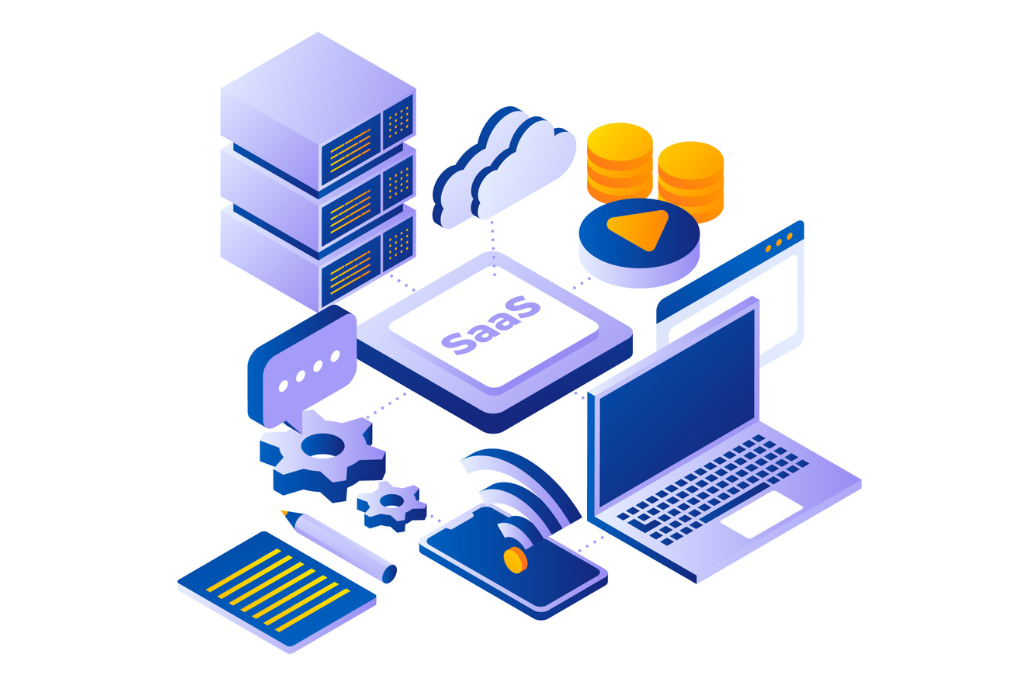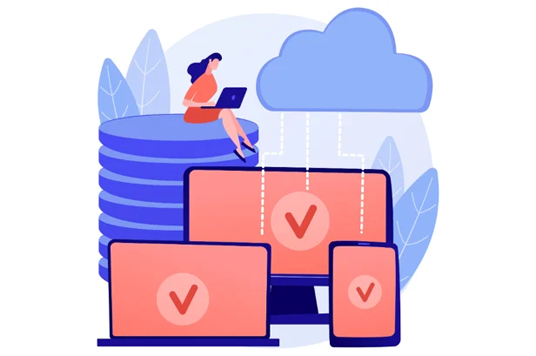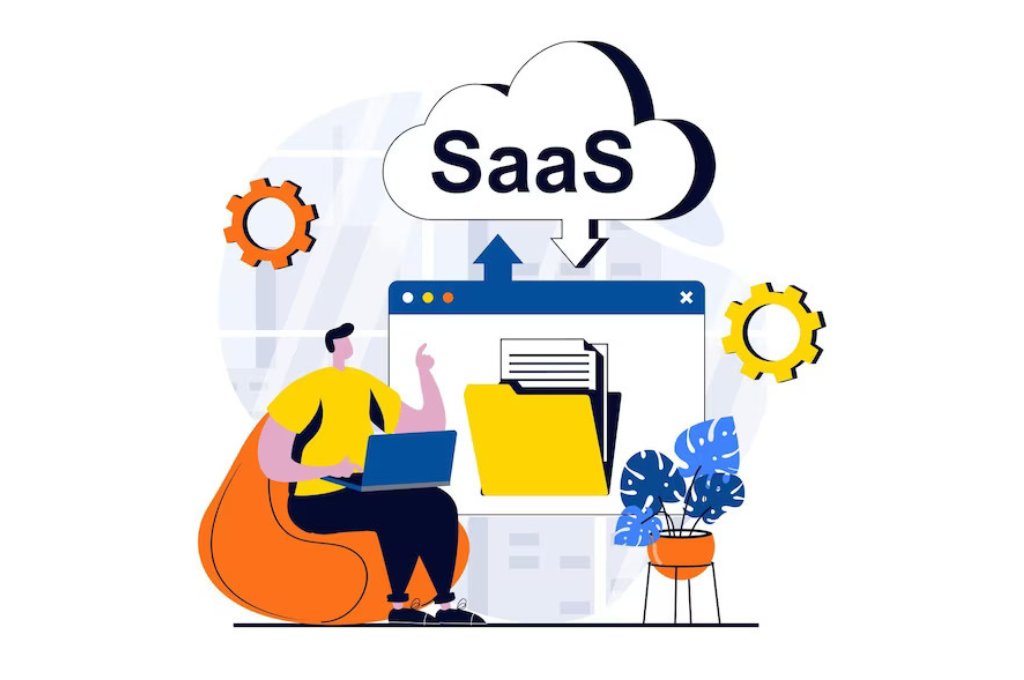We intuitively know when user design is not right. If an app is hard to navigate, we move on. A great user experience (UX) design in Software as a Service (SaaS) products sets successful companies apart.
As RealVNC defines it: “SaaS is software that you lease by subscription from the company that created it.” SaaS products aim to help their users simplify their tasks. Unsurprisingly, user-centered design is essential to new SaaS product development.
What Is user-Centric Design?
User-centric design means that the product is designed around the needs and pain points of the end users. Simply put, a well-designed SaaS product is one that solves a problem in a user’s life. UX design is key to the success of a SaaS application.
From registration and onboarding to ongoing UX updates, SaaS UX design is concerned with every user touchpoint throughout the user journey. Usability, consistency, intuitive design, and seamless flow are all characteristics of a good UX design.
As with many areas of business, simplicity is the best policy. This ranges from a simple, easy-to-remember domain register name to the user experience throughout the customer funnel.
A SaaS product created with user-centric design principles will increase customer engagement, satisfaction, and retention, reduce churn, and help drive sales via word-of-mouth. Great UX design is the ultimate competitive differentiator. Amazon doesn’t have to promote itself much — it is where you go if you want to find and buy something easily and fast.
If you are a business with in-house software development knowledge that goes beyond SaaS and you are using a PaaS, like Platform.sh, the same UX design principles apply.
The Unique Challenges Of SaaS Products
To understand UX design considerations in SaaS products, we first need to consider the unique challenges inherent in SaaS products, as compared to traditional software.
- Accessibility. Users access SaaS products via web browsers and apps, various devices, and locations. Whereas this is great for the end user, it makes control over the consistency of the user experience harder. To create a consistent and intuitive user experience, SaaS companies have to constantly test, reiterate, and optimize.
- Subscription model. Most SaaS products operate on a subscription-based model. If a product does not meet their expectations, users can switch to a competing product in an instant. So, a suboptimal UX can result in a high churn rate.
- Continuous updates. SaaS products have to constantly evolve in line with the user's needs and require regular updates and feature additions. This requires UX designers to maintain a user-centric approach throughout the product's lifecycle. In essence, SaaS product development, or rather evolution, never stops.
What Makes UX Design Great?
Slack, a popular team collaboration tool, is an example of great UX design. Slack understood the need for seamless communication within teams and designed its platform to be intuitive and efficient. Slack's user-friendly interface and features like channels, direct messaging, and integrations with other tools contribute to a great user experience.
Great UX starts with user research. A UX designer needs to know and understand their target users, needs, pain points, and how they’ll use the SaaS product. At this stage, the UX designer would create user personas — detailed profiles of typical users — which capture target users’ objectives, preferences, and pain points. User personas help tailor the UX to specific needs.
Competitive research for market gaps and potential areas for differentiation can help uncover unmet needs and underserved segments of customers. Once the UX designer understands their target users and their unmet needs, they map out the user’s journey and customer experience end-to-end, identifying all possible touchpoints and areas of friction.
For example, when designing their Heroku alternative, the Platform.sh team considered customer needs not met by the current solutions and built their solution around them.
There are basic SaaS best practices for UX design, such as ensuring the application has optimized load times and is responsive to different screen sizes. The key SaaS UX design best practices include:
- Simplified registration process.
- Onboarding to clarify functionality.
- Intuitive navigation and information architecture.
- Regular user feedback and iteration.
- Scalability.
#1. Registration Process
When users register for a new service, registration is their first touchpoint with a SaaS product. Your users will judge your overall UX based on how easy and simple your registration process is.
All of us can recall an experience where we had to fill in lengthy signup forms. This usually involved providing too many details or going in circles trying to register (create a password, password not accepted, reset password, password not valid, etc.).
Most SaaS providers ask for minimal information at this stage, which often is just an email address. The idea is to remove as many barriers to entry. In other words, make the registration journey as frictionless as possible. This will ensure you don’t lose your users before they get to experience your product and become your customers.
#2. Onboarding
SaaS products are technological tools that may have many features and a complex design. For example, FlipBook has 6 product tiers with tens of features in each one. Effective onboarding, coupled with an easy registration process, is important so users can quickly get up to speed on how to use the product's key features.
Different SaaS companies use different onboarding approaches, from interactive product tours, tips on how to use a product, demonstration videos or live streams via a group video chat, support chatbots, and so on. Users can also skip onboarding and get to experience the product right away.
Platform.sh uses product guides to support their clients. For example, Ruby on Rails platform guide supports clients who want to deploy a Ruby application.
#3. Intuitive Navigation And Information Architecture
Marketers spend a lot of time trying to get the user experience right at the customer acquisition stage. For example, despite working with multiple sectors, Vonage, an online telephone service provider, has a well-laid-out website with straightforward, albeit multi-tier, navigation.
For SaaS companies, the overall UX must be great throughout the customer lifecycle. An intuitive navigation system and well-structured information architecture allow users to quickly and effortlessly find what they need in the SaaS application.
The UX design should have a clear hierarchy with a logical flow, enabling users to complete the main tasks easily. Clear and concise menus and buttons help users seamlessly navigate the SaaS product functionality.
Trello, a project management tool, is known for its straightforward and intuitive interface. Cards, boards, and lists make it easy for users to organize tasks and collaborate with their teams. Trello's simplicity in navigation and information architecture ensures that users can start using the platform without a steep learning curve.
#4. Regular User Feedback And Iteration
SaaS product development is an ongoing process, and SaaS providers should seek out and incorporate user feedback into their UX design. Continuous iteration based on user insights is essential to staying relevant with the users and growth.
The use of artificial intelligence is one of the most important SaaS trends. For example, machine learning can assist in forecasting user behavior or preferences, helping identify segments of users who require proactive retention. AI predictive analytics can help create a better user experience and reduce churning.
Netflix regularly updates its platform based on user feedback and data analytics. They use personalized recommendations to constantly evolve their UX and maintain user engagement and retention.
#5. Scalability
As SaaS products grow, they must be able to handle increasing user loads without sacrificing performance. UX designers need to consider how the user experience may change as the product scales.
Zoom, a video conferencing SaaS, experienced exponential growth during the COVID-19 pandemic. Despite this, Zoom managed to maintain its performance and provide a reliable user experience. They scaled their infrastructure to accommodate millions of users, ensuring that meetings remained smooth and uninterrupted.
Key Takeaways
- As users, we intuitively know when user design or experience is not right. If an app or website is confusing, hard to navigate, or slow, we move on. A great user experience (UX) design in Software as a Service (SaaS) products sets successful companies apart from the rest.
- By definition, SaaS users require solutions that get the job done better and faster while being easy to use. SaaS products are digital, so user experience (UX) plays a huge role in how the product is perceived.
- SaaS product development is an ongoing process, and SaaS providers should seek out and incorporate user feedback into their UX design. Continuous iteration based on user insights is essential to staying relevant with the users and growth.
- A user-centric approach, seamless onboarding, intuitive navigation, continuous iteration, and scalability are important elements of effective UX design for SaaS products.
An Essential Role Of UX Design
UX design plays an essential role in the SaaS product’s success. Great UX design allows the creation of exceptional user experiences, resulting in user satisfaction, retention, and growth. A well-designed SaaS product meets user needs, provides solutions to their pain points and delights, keeping them coming back for more.





















